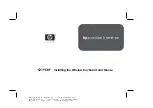
34
ANSI-Recommended Seating
1. Seat height should range from 16” to 20.5”. This refers to how high the chair seat should be with a
person’s weight pressing on the cushions.
2. Seat depth for chairs with rectangular cushions or chairs made of hard materials should range from 15” to
17”. Seat depth refers to the distance from the front edge to the back edge of the seat cushion. Seat depth
can be greater if the front edge of the seat is soft or curved.
3. Seat width should be at least 18.2” measured across the middle of the seat. Seat width refers to the side-to-
side distance across the seat cushion.
4. Distance between armrests should be at least 18.2” measured between the inner edges of the armrests.
5. The backrest should be at least 12” wide in the lower back area. Now that your chair is adjusted, go on to
your work surface.
Adjusting your work surface
The proper height of the work surface is related to the clearance you have beneath it to accommodate your
legs while in a seated position.
1. Pull up to the work surface while seated. With your feet flat on the floor, adjust the height of your work
surface so that your knees do not bump the edge of the work surface, pencil drawer, or keyboard support
tray (when the tray is in working versus storage position). The tops of your thighs should not touch the
underside of the work surface.
2. When pulled up to the work surface, your feet or knees should not bump against the back of the work
surface or wall supporting the work surface.
3. Swivel to grasp something within easy reach on your work surface. You should have enough clearance
beneath your work surface to move freely. Your knees should not bump against storage drawers or work
surface support brackets.
4. While sitting in an upright position, your forearms should rest comfortably on the work surface.
If the height of the work surface causes your shoulders to be raised up or hunched, consider lowering your
work surface. If you must slump or hunch over your work surface, consider raising it so that you can work in
a comfortable, upright position. Check the height of your work surface against the standards recommended by
ANSI.
According to ANSI
1. Knee space should measure at least 20” from side to side under the work surface; 24” of knee space is
preferred.
2. The underside of the work surface or keyboard tray should be higher than your knees. If you work at a
desk with a work surface that cannot be raised or lowered, the clearance under the work surface should be
at least 26.2”.
Summary of Contents for KB132PC
Page 1: ...Kinesis Contoured PS 2 Ergonomic Keyboard Family USER S MANUAL...
Page 2: ......
Page 39: ...39...
Page 40: ...40...







































